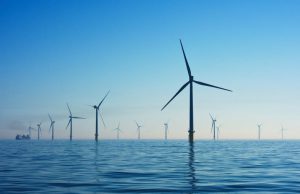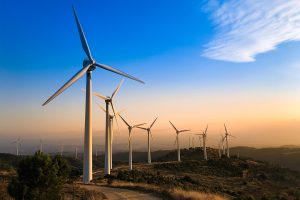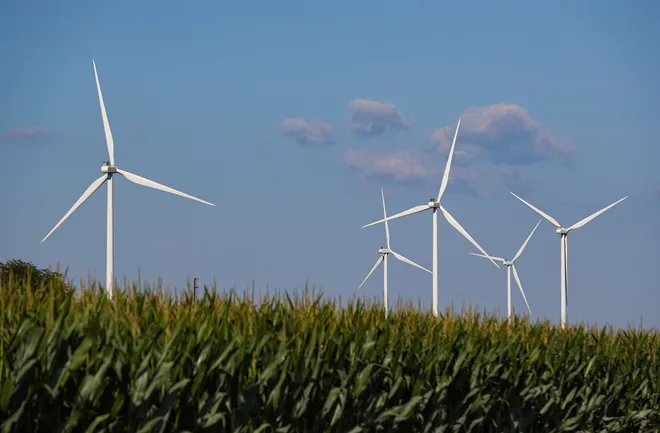1. Alternative method
Offshore wind farms in the Gulf of Mexico proposed by the Biden administration could generate enough electricity for 3.1 million homes in Texas and Louisiana. But the industry is eyeing the potential for offshore wind farms instead of oil production, steel and fertilizer production and other industrial processes.
The administration has committed to building 30 gigawatts of offshore wind to power 10 million homes nationwide by 2030 to help boost renewable energy in the country. But many companies interested in leasing offshore parcels in the Gulf of Mexico want to use that energy to generate renewable hydrogen to power industrial processes to reduce their carbon footprint. So-called clean hydrogen could be sent to the coast through the Gulf’s existing extensive network of oil and gas pipelines and replace traditional hydrogen made from fossil fuels. Clean hydrogen could reduce the state’s carbon footprint by up to 68% and spark an industrial revolution.

The approach, which has not been tested anywhere in the world, is being criticized by some as ineffective and a way to prolong the life of the region’s oil and gas industry even if the agency International energy has called on the Oil and Gas production and development department to keep climate pollution at manageable levels.
“Hydrogen is the wrong and potentially distracting solution,” said Kendall Dix, national policy director for Taproot Earth, a grassroots activism group involved in climate pollution. National policy director of Taproot Earth, a grassroots organization dealing with climate pollution. If you want an energy system that is truly climate and people-friendly, we need to focus on building renewable energy and using that to help people.
2. Reducing the amount of carbon released into the environment
After leasing offshore areas for offshore wind off the Atlantic Coast, the federal government, through the Bureau of Ocean Energy Management (BOEM), is now turning to the Gulf of Mexico as part of its plan. of President Joe Biden to generate enough wind power for 10 million homes by 2030. BOEM plans to release rentals in two areas of the Gulf of Mexico for wind next summer: about 91 miles from Lake Charles, Louisiana and 29 miles off the coast of Galveston, Texas.
In response to the government’s request for feedback, about 10 companies expressed interest in establishing offshore wind farms in the Gulf of Mexico. Shell New Energies was among them, saying in an eight-page letter sent to Boem that it wanted to build a lower-carbon energy business by producing clean hydrogen. Utility Entergy has also expressed interest in building wind farms to generate traditional renewable electricity.
Hydrogen, produced with water and energy, can, among other things, be used to power vehicles, producing electricity when mixed with natural gas and fuel industrial processes. , including oil refineries and plastic factories.
It’s the last industrial application that’s most attractive in Louisiana, as 70% of the state’s greenhouse gas emissions come from the industrial sector. The state is the nation’s largest user of Industrial Hydrogen. Hydrogen burns significantly hotter than natural gas but produces no carbon dioxide. Currently, hydrogen is almost exclusively made with natural gas, methane or coal.
Allison Dejong, a planner with the Water Institute of the Bay, said Green Hydrogen, which is carbon-free, could be a viable solution for the fossil fuel industry to decarbonise. Green Hydrogen has the potential to reduce the state’s carbon footprint by up to 68%, according to the International Energy Agency.
Developers are also interested in hydrogen generation in the Gulf of Mexico because, with modifications, the Gulf’s existing network of hydrogen and natural gas pipelines can be used to transport hydrogen to shore. Such a move would make hydrogen production less expensive. Without using existing pipelines, a study by the National Renewable Energy Laboratory said that developing hydrogen offshore would be expensive because new pipelines would have to be built.

Louisiana State Representative Joseph Orgeron, a marine expert, said that the vast majority of developers he spoke with were proposing to mix hydrogen with natural gas to send it ashore. It can be injected into existing natural gas pipelines along with other natural gases to shore and then extracted at the other end, Orgeron said. Orgeron funded legislation requiring the state’s Public Service Commission to study the costs and best ways to achieve an offshore wind pilot project in the Gulf by 2026.
But some, including the Sierra Club, say that using Green Hydrogen in industrial processes is simply another form of Greenwashing and should not be used to justify industry building. fossil fuel industry. We shouldn’t support projects that consider themselves ‘sustainable’ because their fuel source consists of a small fraction of hydrogen when the lion’s share is gas, according to an analyst at Sierra.
In addition, the World Economic Forum points out that using offshore wind to produce green hydrogen is less efficient than transferring that electricity directly to the grid. Between 20% and 40% of wind energy is lost during the conversion to green hydrogen. “If you have a turbine that produces electricity, the cheapest and best use of electricity is going to go directly to things where electricity is already being used to convert it to hydrogen,” said Warren Leon, chief executive officer of Clean Energy States Union.



